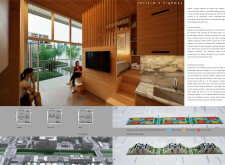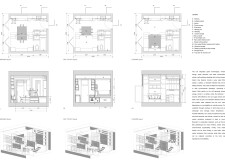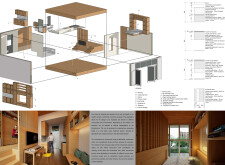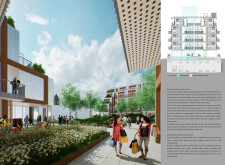5 key facts about this project
### Project Overview
Located in an urban environment, "Reclaim a Highway" addresses the ongoing housing crisis through an innovative microhome concept that repurposes an existing highway. The intent is to create a multifaceted space that combines residential, communal, and recreational areas, promoting community engagement and supporting local economies. This project strategically utilizes underused highway infrastructure to mitigate urban sprawl, increase accessibility, and foster community interaction.
### Spatial Organization and User Experience
The project features three distinct layout configurations: Engaged, Day-to-Day, and Leisure. Each layout optimizes spatial organization to cater to diverse user needs. The **Engaged Layout** facilitates a dynamic interaction between living and workspaces, incorporating multifunctional elements such as a collapsing desk and space-efficient sleeping nooks. The **Day-to-Day Layout** emphasizes sociability with an open-concept kitchen and living area, complemented by strategically placed storage solutions for ease of access. The **Leisure Layout** enhances relaxation and socialization by offering a spacious living area and outdoor balconies that connect residents with nature. This adaptable approach to spatial organization encourages a hybrid lifestyle conducive to community bonding.
### Materiality and Sustainability
Material selection plays a critical role in the project’s sustainability objectives. The design incorporates cross-laminated timber (CLT) for walls and roofs, which significantly reduces carbon emissions. Hemp-lime plaster for interior finishes supports local agriculture and minimizes environmental impact. Recyclable glass is utilized in windows and partitions to improve natural light while reducing energy consumption. Additionally, prefabricated components streamline construction processes, resulting in lower costs and improved adaptability. The project also prioritizes sustainable technologies, featuring solar panels and a rainwater filtration system to enhance energy efficiency and self-sufficiency, thereby minimizing reliance on public utilities. Public greenspaces are designed as ecological sanctuaries, bolstering urban biodiversity while serving as communal gathering points.





















































